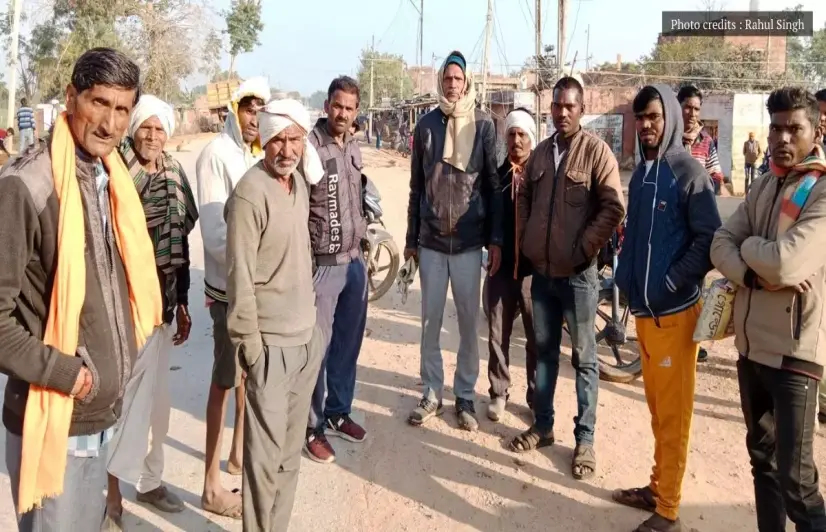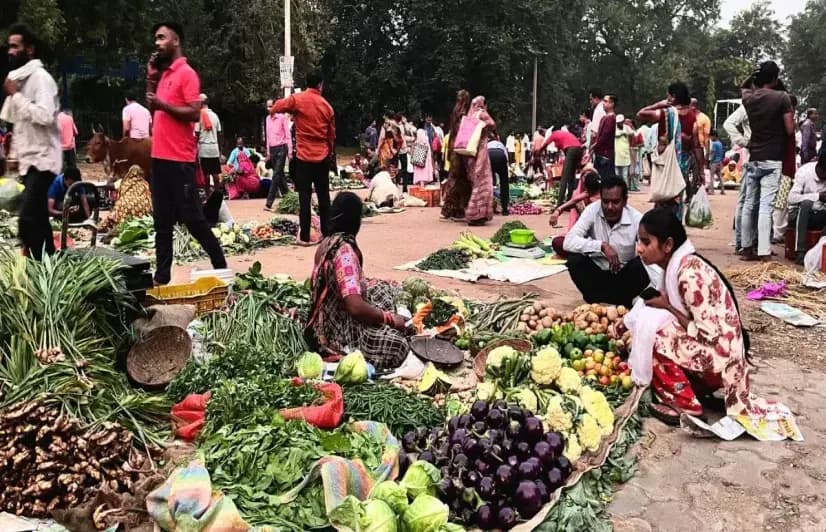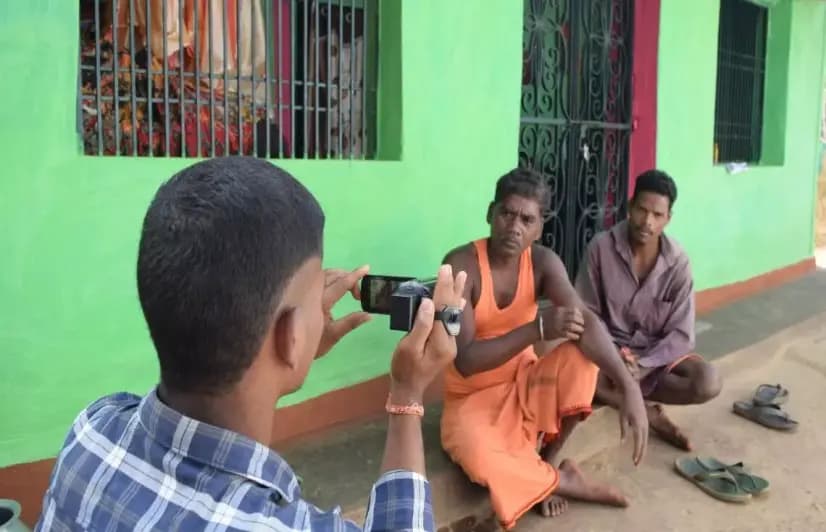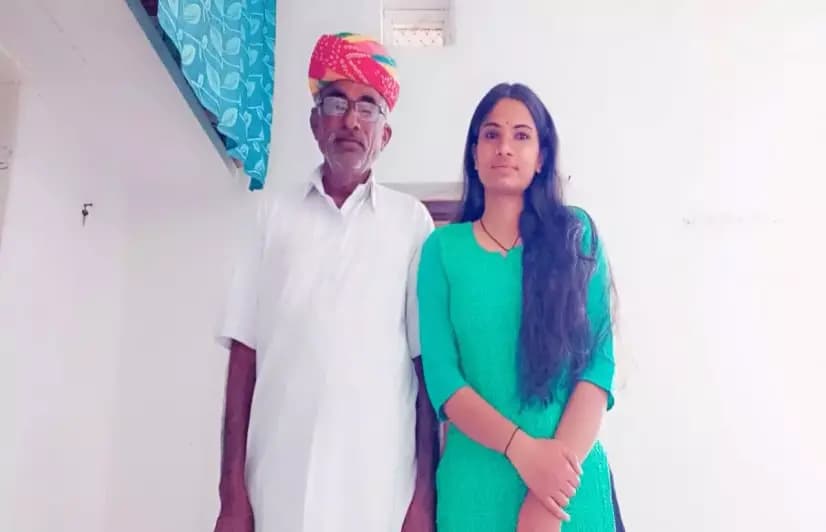Farmers in Madhya Pradesh wildlife sanctuary troubled by a bird that no longer exists

Farmers in Madhya Pradesh wildlife sanctuary troubled by a bird that no longer exists
The Karera Wildlife Sanctuary in Shivpuri district was declared a conservation area for the great Indian bustard in 1981. While the bird hasn’t been spotted there since 1991, villagers still cannot own the land due to its status as a protected area and the clamp on land registry
Rahul Singh and Aishani Goswami
Shivpuri, Madhya Pradesh: Barjor Singh is a farmer from Karowaha, a village in Narwar tehsil in Madhya Pradesh's Shivpuri district. He and his sons, Pushpendra Rawat and Jiten Rawat, have worked hard and invested all their energy into farming. Singh owns around 45 bighas (around 27 acres) of land, over half of which have been acquired as a result of the family’s diligent labour. However, his biggest regret now is that he cannot claim to be the rightful owner of the land he purchased. With Karowaha village being part of the Karera Wildlife Sanctuary, Singh and his family are merely considered landholders and not owners, on paper.
“The land registry of villages that fall under the sanctuary is closed, and for any transactions, only the notary paper can be obtained by the court. Land that was earlier sold at the rate of Rs 2.5 to 3.5 lakh per bigha is now sold at only Rs 1.5 to 2 lakh per bigha,” Singh told 101Reporters.
Kallu Parihar of the village says, "It becomes difficult to find the wedding alliance for the men of this village, because of the lack of land registration and ownership of the land. The girl's family is always apprehensive and in doubt in such a situation."
Karowaha village falls under the Bagahwan panchayat and is one of the 32 villages of Karera and Narwar tehsils in Shivpuri district located on the periphery of the Karera Wildlife Sanctuary.
In 1981, the sanctuary was declared a protected area for the conservation of the son chiriya (the great Indian bustard) and blackbucks. However, the bird hasn’t been spotted in this region since 1991.
No son chiriya, but peacocks aplenty
These settlements on the fringes of sanctuaries, lying on the banks of the River Sindh and its tributary Mahuar, appear like any other normal Indian village.
Moving past Karera, the first village one comes across is Languri, around 5 km away from Karera market, under the Dumduma panchayat. Here, on a dilapidated board, the starting point of the Karera Wildlife Sanctuary is announced along with a map of the area. This board mirrors the true condition of the sanctuary. On entering the area, we failed to spot any son chiriya, but we did notice a lot of peacocks.
Karera Wildlife Sanctuary, Shivpuri, Madhya Pradesh was established in 1981 to protect the population of Great Indian Bustard (Photo credits: Rahul Singh)
Bagahwan panchayat head, 32-year-old Hemant Rawat, told us that the people here had submitted a number of memoranda to the administration to end the protected-area status of the sanctuary. However, since no official action had been taken, they were planning to carry out agitations again.
“The registry of the land is closed here, due to which the farmers of this area are very upset,” said Rawat.
Ramvaran Gurjar, a 33-year-old farmer from Hajinagar village, added, “Here, only notarised paper is made for the land, and the owner can take back the land at any time and refuse to pay the money back. Every two to four years, government officials come and tell us to vacate the land.”
Raghuveer Singh Parihar, a farmer from Ramnagar village, also on the periphery of the Karera Wildlife Sanctuary, further said, “Land registry has been closed here since 1983. It was opened for a year-and-a-half in between, but then shut again in 1998."
Arvind Pal, another farmer from the village, said, “The government only spouts rhetoric in the name of the son chiriya area. Leaders promise to do something about it during elections and forget later.”
In our conversations with Gurjar and several other farmers, it was evident that the villagers here have a friendly relationship with the peacocks, but are troubled by the nilgai and stray cattle because they graze on their crops. They say that there is neither any son chiriya nor blackbuck here.
“We fully protect the peacocks as they help us by eating insects and snakes and don’t cause problems for anyone. In summer, we also leave out water for them,” Gurjar said.
According to JS Chauhan, Madhya Pradesh Principal Chief Conservator of Forests (Wildlife), “The great Indian bustard has not been seen in Karera since the early 1990s. So the state has taken the initiative to de-notify that area. It's now in its advanced stage. However, no sanctuary can be de-notified without the consent of the Supreme Court. The National Board of Wildlife will meet in a month or two. We have prepared the agenda for it, and our representatives will put their points across.”
Destruction of habitat led to decline
Former director of the Bombay Natural History Society (BNHS), Asad R Rahmani, who has carried out extensive research on the great Indian bustard, told 101Reporters, “In 1981, Karera Wildlife Sanctuary was declared a forest reserve, and initially, five to six birds were spotted there. They grew in numbers for around four years. Once, we even saw 14 bustards together, including their young ones. Our research project there ended in 1986, and I saw the great Indian bustard for the last time in 1991. They haven’t been spotted there ever since.”
“Certainly, if there are no bustards in Karera any longer, and farmers are suffering as a result, my personal sympathy is with them, and the area should de-notified as a forest reserve. But then, can this be a solution?” Rahmani debated, adding, “If this is done, there will be a demand to de-notify many sanctuaries in other parts of the country, and it will lead to various troubles. Efforts to conserve rare and endangered species will face further setbacks. There are son chiriya in Rajasthan, too, in the Jaisalmer-Barmer region, but now, they are no longer visible in Barmer, and there have been demands to de-notify the sanctuary there, too.”
So what led to the decline of the great Indian bustard? Rahmani believes the biggest reason was the damage to its habitat. These birds nest and lay eggs on the ground, specifically in the grassland as it’s favourable to them, but other animals destroy the eggs. "Moreover, only the eggs were counted by the forest department, leading to a higher census, and as a result, the real numbers were hidden, and they eventually disappeared," he alleges.
Another misstep could be that dense forests were chosen for the great Indian bustard conservation initiative in other parts of Madhya Pradesh, whereas grazing land with light grass is more suitable for the species. This was done in the centre of the Gwalior-Shivpuri region near Ghatigaon.
Similarly, son chiriya have disappeared from Tigra Dam near Gwalior, where they were spotted earlier.
Current status of the great Indian bustard
The great Indian bustard is the largest land-dwelling bird. It cannot fly and grows up to one metre in height. The bird is usually found in the agricultural grasslands of the Indian subcontinent and is omnivorous. According to the information available on the BNHS website, its current numbers are 100 to 125, of which about 100 are in Rajasthan alone. A small number of them are in Gujarat, Karnataka, Maharashtra and Andhra Pradesh. If the current trend continues, there are fears that the species may go extinct. Presently, the most serious effort towards its conservation in India is being carried out in Jaisalmer.
Edited by Gia Claudette Fernandes
This story has been produced as part of the Moving Upstream: Sindh Fellowship offered by Veditum India Foundation. Rahul is a Jharkhand-based independent journalist and Aishani is an Ahmedabad-based architect and water practitioner.
Would you like to Support us
101 Stories Around The Web
Explore All News
Jun 11
‘’मलेरियाने माझा मुलगा अन् नवरा बी मेला’’... गडचिरोलीमध्ये तापमान बदलाचा आणि डासांचा काय आहे संबंध?

Jun 11
ओडिशा : जलवायु चुनौतियों से निबटने मैंग्रोव संरक्षण के कार्य में जुटी महिलाओं की कहानी
-5.webp&w=3840&q=75)
Mar 27
A Painful Period In The Salt Pans Of Little Rann Of Kutch
-13.webp&w=3840&q=75)
Mar 27
Madhya Pradesh: Where is Our Free Time?

Feb 02
Dilemma Faced By Poor Farmers In Bundelkhand: Grow Organic While Selling Non-Organic

Feb 02
Giridih saves its village ponds with NITI Aayog's help

Jul 29
Odisha students use mobile cameras and pens to preserve village history
-18.webp&w=3840&q=75)
Jul 29
Rajasthan: Fasal Bima Yojana and the Art of Minimising Payouts
-16.webp&w=3840&q=75)
May 25
Waste to wealth: Bhopal district panchayat spends Rs 75,000 per month to earn just Rs 4.5 lakh a year

May 10
A Victory For Unmarried Rajasthani Women As Anganwadi Positions Open For Them
About the Reporter
Top stories by Rahul Singh
Write For 101Reporters
Would you like to Support us
Follow Us On






_(79).webp&w=3840&q=75)

